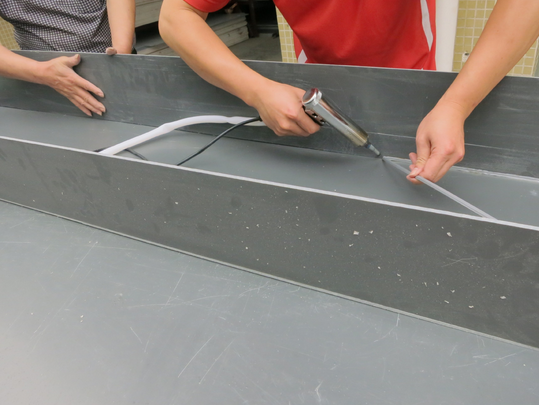
Returning Customer
I am a returning customer
Register Account
If you already have an account with us, please login at the login form.
Your Account Has Been Created!
Congratulations! Your new account has been successfully created!
You can now take advantage of member privileges to enhance your online shopping experience with us.
If you have ANY questions about the operation of this online shop, please e-mail the store owner.
A confirmation has been sent to the provided e-mail address. If you have not received it within the hour, please contact us.
Account Logout
You have been logged off your account. It is now safe to leave the computer.
Your shopping cart has been saved, the items inside it will be restored whenever you log back into your account.
A wide variety of plastic products can be seen everywhere in our production and life. The plastic material processing methods are also numerous. There are more than 15 methods for thermoplastic welding, such as: heating tool welding, ultrasonic welding, vibration friction welding ...but for the three-dimensional geometric shapes, hollow bodies, large parts and other products, the above processing methods have more or less some technical problems, and laser welding solves these problems very well.

At present, laser welding of plastics can be divided into non-contact laser welding and laser transmission welding. Here we mainly introduce laser transmission welding. Laser transmission welding refers to a technique in which a laser beam passes through a laser plastic to reach a surface that absorbs laser plastic, heat generated by the laser beam acts on the contact surface, melts the plastic contact surface, and then bonds the thermoplastic components together. This welding method can be applied to both lap joint welding and butt joint welding. It has also been gradually applied to the manufacture of automobile clutches, brake parts, engine covers, and automotive lights.
The principle of laser welding plastics is: two kinds of plastics are clamped together under low pressure, through the optical path system composed of mirrors, lenses or optical fibers, the beam generated by the laser is focused on the area to be welded, forming a heat-affected zone, one of which Plastics are transmissive to near-infrared lasers. Another plastic absorbs lasers. Plastics that absorb laser energy convert light energy into heat, melting at the plastic contact surface, and the heat is also transmitted to the plastic surface that transmits near-infrared light. Melt zone. Under the action of clamping force, the melting zone produces intermolecular mixing. When the size of the melting reaches the specified requirements, the laser heat source is removed. Under the action of a certain pressure, the weld is formed after cooling, and the transmission laser plastic welding is realized. In order to improve the absorption performance of the upper plastic, an absorbent is often added. In addition, in order to increase the permeability of the plastic, the dye with high permeability is often added.
1) The use of a high energy density laser heat source optimizes the temperature of the plastic joint surface to ensure high speed and high precision of the plastic laser welding process.
2) The heat-affected zone and the bonding zone can be controlled to a small degree by changes in the shape and size of the laser beam. The outer surface of the welding area was invisible to the welds and no damage was caused by welding.
3) The parts are assembled before welding and the welding process is very easy.
4) There is no restriction on the shape and size of the parts, so that the freedom of design of the parts can be greatly improved.
5) There is no vibration in the welding process, which is very favorable for vibration sensitive components such as electronic components and medical instruments.
6) Non-contact processing (where there is no physical contact between the connected parts and the heat source), it is easy to maintain the health and safety of medical and food equipment.
7) The laser beam transmission has a high degree of freedom and is easy to automate.
8) It does not produce toxic fumes, etc. The welding site is safe and reliable.
Transmission laser welding heat source
Laser transmission welding uses infrared laser as the welding heat source, and the wavelength is mainly 980nm. The power level is generally based on the welding size and material, and the 30W-200W fiber output semiconductor laser is generally used. Kaplan Photoelectric 60W-200W semiconductor laser, integrated high-precision control system, uses non-contact welding, minimal heat-affected zone and controllable solder joint temperature, and is applied to plastic welding.
